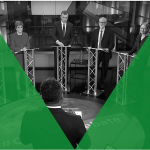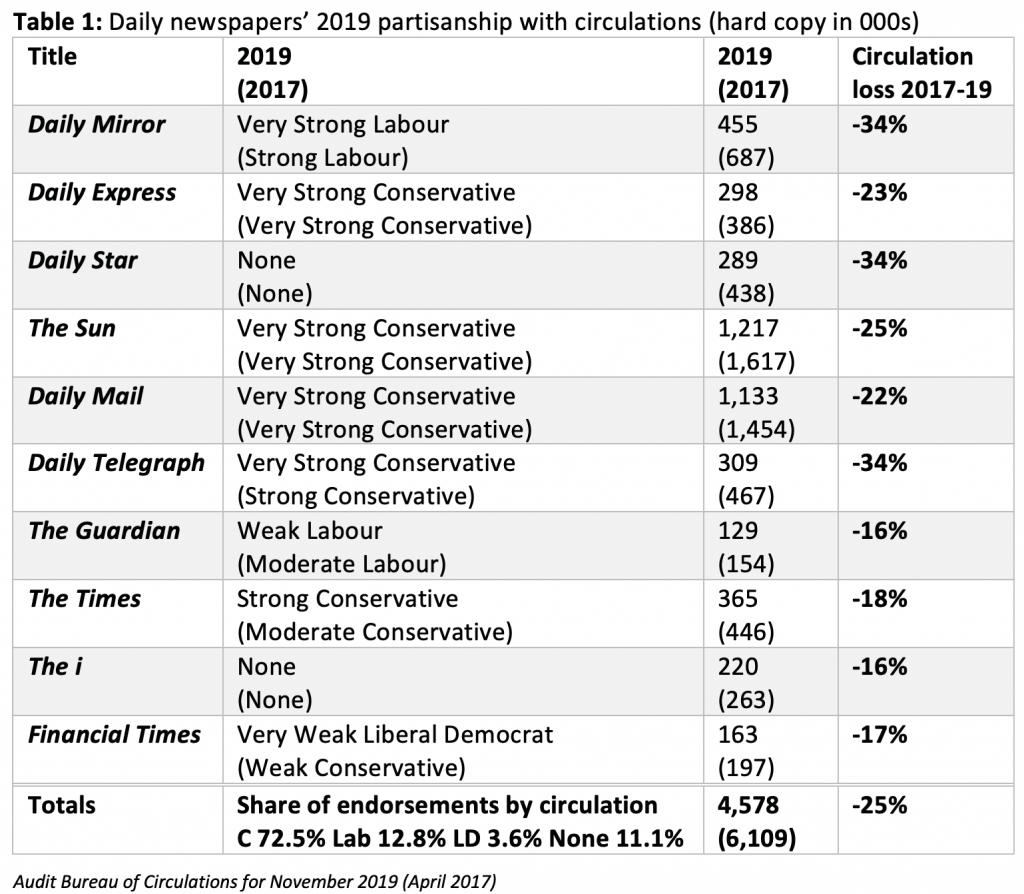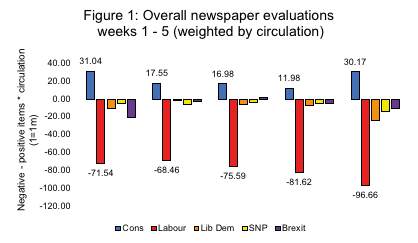
Prof Dominic Wring
Communication, Centre for Research in Communication and Culture, Loughborough University.
Email: D.J.Wring@lboro.ac.uk

Prof David Deacon
Professor of Communication and Media Analysis, Centre for Research in Communication and Culture, Loughborough University.
Email: d.n.deacon@lboro.ac.uk

Section 7: News and Journalism
- Time to fix our TV debates
- What was all that about, then? The media agenda in the 2019 General Election
- Pluralism or partisanship? Calibrating punditry on BBC2’s Politics Live
- Hero and villain: the media’s role in identity management
- Traditional majoritarian conceptions of UK politics pose a dilemma for the media in elections
- #GE2019: A tale of two elections?
- Boxing clever: negotiating gender in campaign coverage during the 2019 General Election
- Press distortion of public opinion polling: what can, or should, be done?
- The class war election
- An uncertain future for alternative online media?
Election endorsements are important because they represent self-conscious attempts by newspapers to distil and convey their partisan preferences. While acknowledging most titles declare allegiances, it is also important to examine how and whether they qualify this support. Table 1 demonstrates that this was, in press terms, a highly polarised election with the Tory dominated, paid for daily print market overwhelmingly exhorting readers to vote Conservative. But the same figures also reveal that there has been a sharp decline of 25% in hard copy sales since the last, relatively recent election of 2017. If this trend continues it will be interesting to see what remains of the print market in the next election expected in 2024.
Press coverage of the 2019 campaign was characterised by its fierce partisanship. Having relentlessly attacked him in 2017, The Daily Mail had been invited by the Labour leader to do so again at the following election. The Mail duly responded with negative coverage that culminated in a frontpage declaration for “Boris”. The Express followed suit with a cover photograph of the Prime Minster captioned “Brexit and Britain in your hands”. The Sun also declared voting Conservative would “Save Brexit” and “Save Britain” from “Red Jez” and his “extremists”. The quality Telegraph emulated the more polemical tone of its counterparts in warning against the election of a ‘Marxist’ government. The Times, the other member of the Tory press, adopted more measured language in acknowledging “Remain minded liberal Conservatives” faced a dilemma before warning the Brexit Party threatened Boris Johnson’s chances of victory.
The five non-Conservative newspapers each took a distinctive editorial line. The Mirror, Labour’s only stalwart press supporter, excoriated a ‘lying PM’ as a ‘cheat and charlatan’. Giving lukewarm backing to Labour, the Guardian scolded Corbyn’s leadership before concluding the party was “not perfect but progressive”. The anti-Brexit Financial Times offered tepid support to the Liberal Democrats, despite their “poor campaign”, because their larger rivals were “populist”. Although very different publications, The i and the Star both promoted their non-partisanship and encouraged readers to make up their own minds when voting. But the latter couldn’t resist deriding the two main parties as “clowns to the left of us, jokers to the right”.
As part of Loughborough University’s real time audit of national news coverage of the 2019 General Election, all election items were graded according to their positivity and negativity for the main political parties. Figure 1 aggregates the weekly scores for each party when positive and negative print items are combined and weighted by circulation. The size of anti-Labour print media coverage is pronounced and demonstrated by the large red minus bars’ size. The weekly analysis shows how these intensified throughout the campaign, becoming most evident in the final days of the campaign.
The non-red bars are modest in size because of the relative lack of print interest in other parties. Although Johnson received negative press during the campaign over issues like health, the Conservatives were the only party to enjoy positive coverage throughout the election. Some of this reinforced Johnson’s ‘get Brexit done’ narrative. And whereas print reporting of the 2010 and 2015 elections demonstrated greater interest in potential coalition partners, notably the Liberal Democrats and SNP respectively, there was little commentary about them this time. Like 2017, 2019 was overwhelmingly represented as a binary choice. A huge circulation advantage ensured that if voters bought a newspaper over the counter, they would be more than likely to read pro-Conservative material. While how and whether this factor might have had a bearing on this campaign is one issue, the sharp decline of print sales since 2017 also raises a further intriguing question: will 2019 be the traditional hard copy newspapers’ final meaningful electoral verdict?


